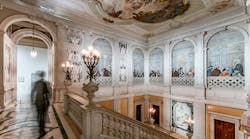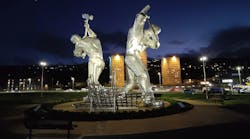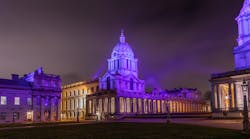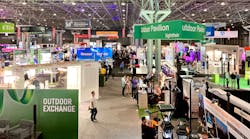The designer took inspiration for his installation "Fragrance with Lotus Flowers" from the lotus. In Japan, he explains, the lotus is sacred—something often found in gardens and ponds. “The flowers are usually shrouded in a light mist in the early morning. So, fog becomes a way to visualize the fragrance of the flowers, says Nakamura. Fog represents profundity—a mist formed by delicate water particles that catch the light. “I tried to design a new space by objects that have such a vague appearance,” he explains. The concept earned him an Architectural MasterPrize in 2021.
By designing the sparseness of how the lines come together, he notes a gradation with shades of transparency is drawn, spreading across the space. “The delicate artwork touches the light and depicts the vague figure of light, revealing the existence of the air that fills the space.”
Nakamura conceived the lighting design with Masao Igarashi of Theaterbrain. The spatial points were calculated and placed, one by one, using 3D modeling design technology to create a fog-like gradation of light. “It follows the way gardeners, who maintain the beauty of Japanese gardens, adjust the density of branches and leaves by pruning trees, creating gradations of sparseness, and denseness to design transparency and depth. The installation is also sustainable in that it can be developed in a variety of ways to suit different spaces by changing the number of lines and the arrangement of the lines.
This article appeared in the March 2022 issue of Architectural SSL magazine.








